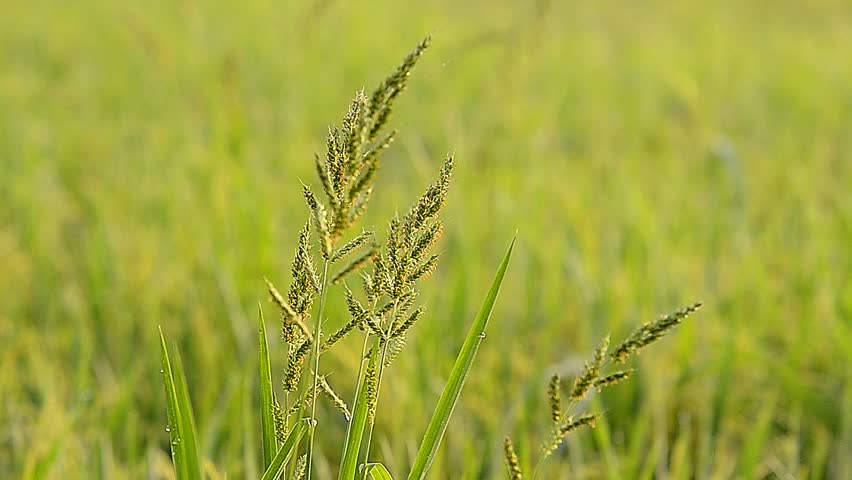The resistance of rice
weeds to herbicides is now a focus by the industry insiders. Most
of echinochloa crusgalli (L.) beauv. in rice fields is
strongly resistant to penoxsulam and quinclorac. In fact, new types
of herbicides are demanded urgently.

Rice
is one of the most important crops in China, considering the fact that this
dish lands on the table of most Chinese families at least once a day. As a
result, the area of rice planting in the country is huge and various
measurements are taken to ensure a steady output.
However,
farmers are experiencing an increasing resistance of rice weeds in recent
times, forcing them, to use more herbicides on the field and increasing the
resistance even more. Hence, new rice weed herbicides are urgently needed in
China to counter the threat of growing resistant weed. Enterprises can see this
trend as a chance to introduce new rice herbicides into China and profit from
the inconvenient situation on China’s rice farmers.
According
to market intelligence firm CCM, the resistance of rice weeds for the current
herbicides used on China’s fields have been focused by many industry insiders
already. In recent years, large-scale planting, total wheat straw
incorporation, and changes in characteristics of rice weeds have occurred,
causing the problem of the threatening resistance. In China, rice weeds are
increasingly resistant to herbicides, and the vicious cycle of reduced efficacy
of some herbicides and increased use amounts of herbicides is on its way.
This
causes rises in the cost of prevention and control and increases in difficulty
during prevention and control. Official statistics show that there were 43
varieties of weed in China in 2017. Of all those weeds, rice weeds are of a
relatively high frequency of occurrence, according to CCM’s research.
Especially
a few rice weeds are causing significant damage to China’s crops. The worst
ones are weedy rice, echinochloa crusgalli beauv., leptochloa chinensis nees, ammannia baccifera
L. and eclipta prostrate. Finding effective herbicides against this
pest is of high importance for the Chinese agriculture.
Now
it is a stage of rapid growth for the herbicide resistant weeds in
China. Such reports have been made in certain areas in large quantities. In
addition to the reduction of efficacy, the cost for prevention and
control has also been increased. In particular, herbicides mainly including
quinclorac, penoxsulam and cyhalofop-butyl have been exposed for
times. It is only a matter of time until they lose competitiveness in killing
rice weeds, as the resistance is increasingly strong. When the efficacy is
weakened, farmers need to increase the use amount so as to kill the weeds,
which causes growths in cost. Additionally, market shares may be occupied by
new herbicides launched onto the market to the largest extent. However, such
so-called new herbicides are lack of new mechanisms of action, as China is
still poor in pesticide innovation.
In
2017, the National Agri-Tech Extension Service Centre organised monitoring of
rice weeds' resistance at 60 pesticide resistance monitoring sites in a total
of 19 provinces, regions, and municipalities such as Jiangsu, Anhui, Jiangxi
and Shandong. Results show that the rice weeds have significantly increased
their resistance to the herbicides in common use. Particularly, the resistance
to penoxsulam, quinclorac, cyhalofop-butyl, bensulfuron-methyl
and pretilachlor has been developed. In the double-cropping rice planting area
along Changjiang River, echinochloa crusgalli (L.) beauv.
has shown strong resistance to the herbicides in common use such
as penoxsulam, quinclorac and bispyribac-sodium. Their respective use
amount has been increased by over 100% against that registered primarily;
however, their efficacy is still very poor.

Current resistance
of key rice weeds in China
Echinochloa
crusgalli beauv. strikes nationwide. Detections find that it is resistant to
quinclorac, penoxsulam, bispyribac-sodium and propanil, which
seriously reduces the efficacy. Of this, the use amount of quinclorac has been
doubled. This, in addition to greatly increased cost, carries safety risks to
the succeeding crop which is sensitive. Hence, its use is decreasing sharply.
Leptochloa chinensis nees resistance
to cyhalofop-butyl has been increased year by year. In the areas where
this weed always strikes, the use amount of cyhalofop-butyl has been
nearly doubled already, which is a great impact on its application.
The
prevention and control of weedy rice are carried out mainly by soil cultivation
after seedling, irrigation and rice transplanting. There are few herbicides
targeting this weed.
Sagittaria trifolia L.
and monochoria vaginalis. have developed strong resistance
to bensulfuron-methyl and pyrazosulfuron, which is now a big problem
in rice production; monochoria vaginalis, striking Changjiang River
basin in a relatively severe way, has also been strongly resistant to the said
2 herbicides, and the substitutes, bentazone and chipton, however, have
safety risks.
Alternanthera
philoxeroides griseb.: is in the situation that only fluroxypyr is
effective on it. However, there are certain safety risks and strict limitations
on the period of application and the use amount.
About the article
The
information for this article comes from CCM, China’s leading market
intelligence provider for the fields of agriculture, chemicals, food and feed.
For
regular and exclusive insights into China’s herbicides market, subscribe to
CCM’s monthly published Herbicide China News.
Join
the discussion in our groups on LinkedIn and Facebook.
Follow
CCM on Twitter: @CCM_Kcomber